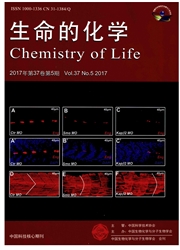

 中文摘要:
中文摘要:
宿主细胞依赖固有免疫系统识别入侵的病原微生物,经相关细胞信号转导通路,激活促炎症及抗感染的基因表达。泛素化修饰是细胞内广泛存在的蛋白质翻译后修饰机制,全方位调控宿主细胞防御病原微生物的动态过程:一方面,作为多功能的信号调节分子,在时空上精细调节免疫反应的进程,有效地清除入侵的病原体;另一方面,通过降解关键信号转导分子,限制过度免疫反应,避免造成宿主自体损伤。本文总结了泛素化修饰在Toll样受体信号通路(TLR)、RIG-I样受体信号通路(RLR)和STING介导的信号通路中的新功能,以及相关分子调控机制,并对前沿方向进行展望。
 英文摘要:
英文摘要:
Innate immunity is the first line of host defense against invading microbes via inducing the production of pro-inflammatory cytokines and anti-microbial effectors. Ubiquitination, a versatile molecular signature, has been uncovered to dynamically modulate the innate immune signalings. On the one hand, ubiquitination mediates the clearance of pathogens by spatially and temporally potentiating immune signalings; On the other hand, ubiquitination triggers the proteasome-mediated degradation of the key signaling proteins to restrict excessive immune responses. Here, we summarize the current progress on the ubiquitin-mediated regulation of the Toll like receptor (TLR) signaling, RIG-I like receptor (RLR) signaling, and STING-mediated signaling, and highlight important questions for future exploration.
 同期刊论文项目
同期刊论文项目
 同项目期刊论文
同项目期刊论文
 期刊信息
期刊信息
